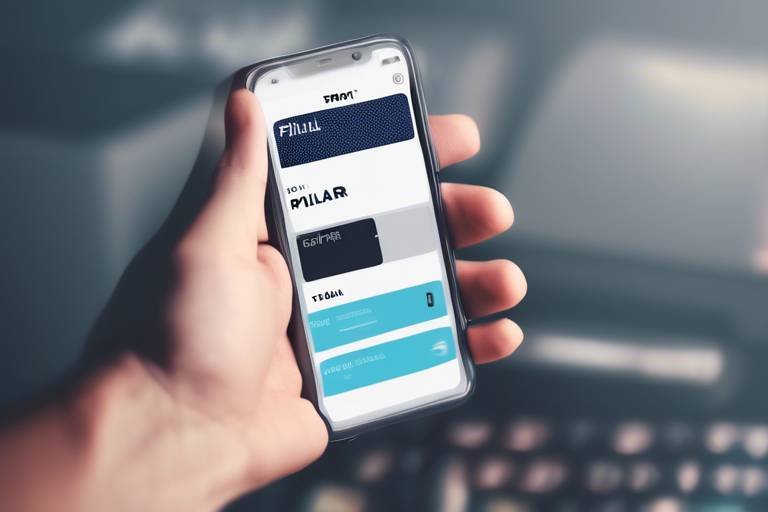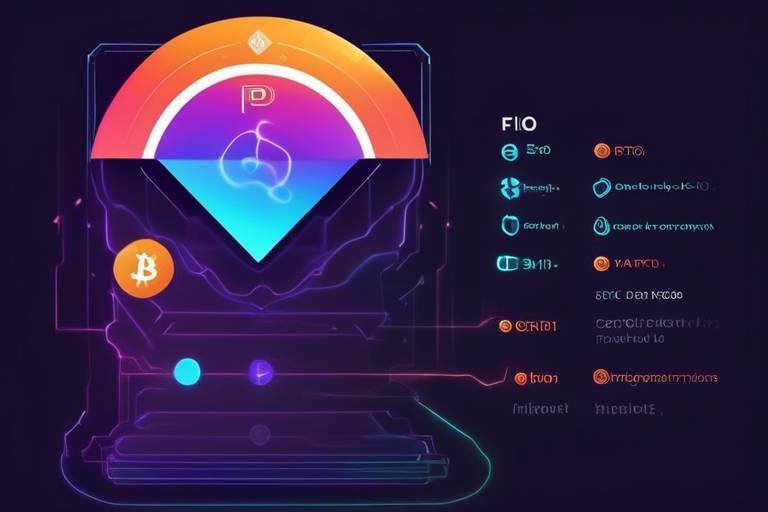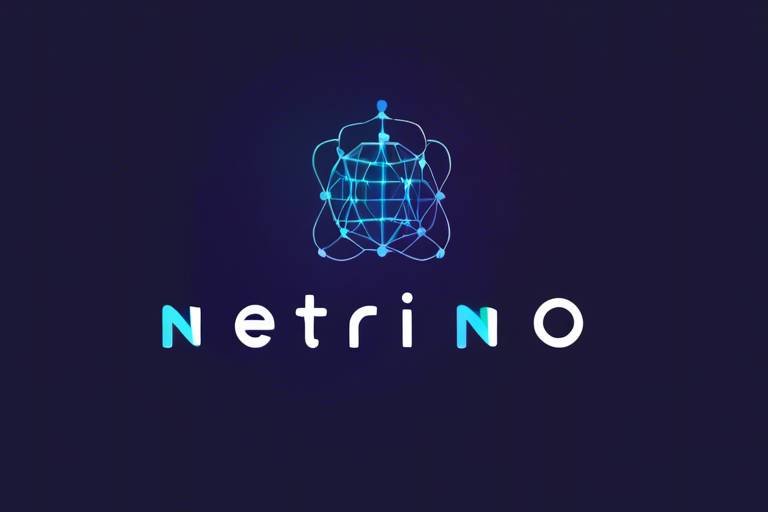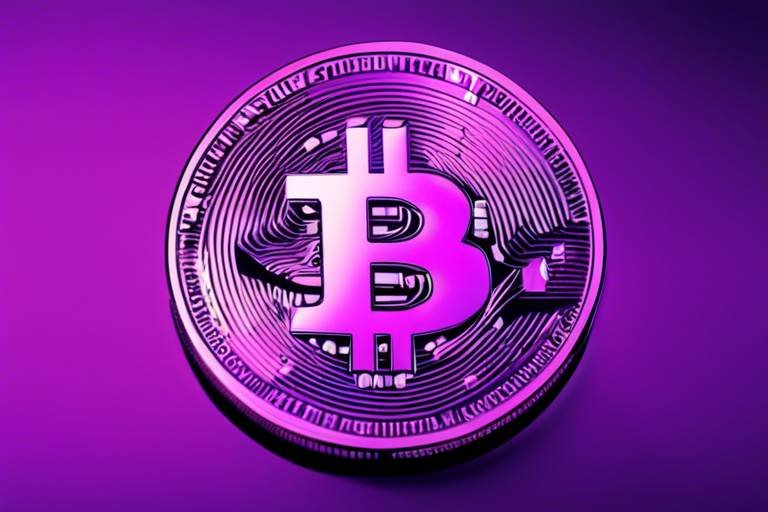BlockFi - Crypto Lending and Borrowing Explained
In the ever-evolving world of finance, BlockFi stands out as a pivotal player in the realm of cryptocurrency lending and borrowing. Imagine a bank, but instead of traditional currencies, it deals with digital assets like Bitcoin and Ethereum. This article delves into BlockFi's services, exploring how crypto lending and borrowing works, its benefits, risks, and the overall impact on the cryptocurrency market. Whether you are a seasoned investor or a curious newcomer, understanding BlockFi can open up a world of opportunities in the crypto space.
Crypto lending is a fascinating concept that allows users to earn interest on their digital assets by lending them to others. Think of it as putting your money in a savings account, but instead of receiving interest from a bank, you're earning it from individuals or institutions looking to borrow your crypto. In today's financial landscape, where traditional interest rates are often dismal, crypto lending offers a refreshing alternative. Users can earn returns that are often significantly higher than what traditional banks provide, making it an attractive option for those looking to grow their wealth.
BlockFi serves as a platform where users can lend and borrow cryptocurrencies seamlessly. The process begins with creating an account, which is as easy as pie. Once your account is set up, you can lend your crypto assets or borrow against them. The beauty of BlockFi lies in its user-friendly interface and transparent processes. Users must meet certain collateral requirements for borrowing, and interest rates are competitive, making it a win-win situation for both lenders and borrowers.
Creating an account on BlockFi is straightforward. You start by visiting their website and clicking on the "Sign Up" button. The necessary steps include providing your email address, creating a password, and verifying your identity. This verification process is crucial for security and regulatory compliance, ensuring that all users are legitimate. Once you've completed the verification, you can link your bank account for seamless transactions.
Verification is not just a formality; it's a vital step to ensure the safety of your assets. During the account setup process, you'll need to provide various documents, such as a government-issued ID and proof of residence. This information helps BlockFi comply with regulations and protect users from fraud. It might seem tedious, but think of it as a protective shield for your investments.
Once verified, users can fund their BlockFi accounts with ease. You can deposit cryptocurrencies directly or use fiat currency. BlockFi supports a variety of cryptocurrencies, making it flexible for users with different asset preferences. Whether you're transferring Bitcoin, Ethereum, or stablecoins, the process is designed to be user-friendly and efficient.
BlockFi provides competitive interest rates for crypto deposits, which can vary based on market conditions and the type of cryptocurrency. These rates are determined by supply and demand dynamics within the platform. For instance, if there’s a high demand for borrowing a specific asset, the interest rate for lenders may increase. The terms associated with lending are transparent, allowing users to know exactly what to expect.
BlockFi enables users to borrow funds using their crypto assets as collateral. This feature is particularly appealing for those who want to access liquidity without selling their digital assets. Imagine needing cash for an urgent expense but not wanting to part with your Bitcoin. With BlockFi, you can borrow against it, keeping your investment intact while getting the funds you need.
Understanding the loan-to-value (LTV) ratio is essential when borrowing. The LTV ratio indicates how much you can borrow against your collateral. For example, if your Bitcoin is worth $10,000 and the LTV ratio is 50%, you can borrow up to $5,000. This ratio affects not only the loan amount but also the interest rates. A lower LTV typically results in better rates, so it’s wise to consider this when borrowing.
Borrowers on BlockFi have various repayment options, providing flexibility in how and when they pay back their loans. You can choose from different repayment schedules, allowing you to align your payments with your financial situation. However, it’s crucial to understand the implications of defaulting on a loan, as it could lead to losing your collateral. Always borrow responsibly!
While BlockFi offers attractive services, there are inherent risks that users should be aware of. The crypto market is notoriously volatile, and fluctuations can impact both lending and borrowing activities. Additionally, as the landscape evolves, regulatory considerations are becoming increasingly important. Staying informed about these risks can help you navigate the crypto waters more safely.
Cryptocurrency markets are known for their wild fluctuations. Prices can soar or plummet in a matter of hours, which can complicate lending and borrowing activities on BlockFi. If the value of your collateral drops significantly, you might face liquidation of your assets to cover the loan. This is why it’s essential to monitor market trends and understand the risks involved.
As the crypto landscape evolves, so do regulations. It’s crucial to stay informed about the legal aspects when using BlockFi's services. Regulatory changes can impact how BlockFi operates, affecting everything from interest rates to the availability of certain features. Being proactive about understanding these changes can help you make informed decisions.
Here are some common questions users have about BlockFi:
- What cryptocurrencies can I lend or borrow on BlockFi? BlockFi supports a range of cryptocurrencies, including Bitcoin, Ethereum, and stablecoins.
- How does BlockFi determine interest rates? Interest rates are determined by market demand and supply dynamics for each cryptocurrency.
- Is my collateral safe on BlockFi? Yes, BlockFi employs robust security measures to protect your assets.
- What happens if I default on my loan? If you default, BlockFi may liquidate your collateral to cover the outstanding loan amount.

Understanding Crypto Lending
In today's digital age, the concept of lending has taken on a whole new meaning, especially with the rise of cryptocurrencies. Crypto lending allows users to earn interest on their digital assets by lending them to others. Imagine having your money work for you while you sleep! Instead of letting your cryptocurrencies sit idle in a wallet, you can put them to work and potentially earn a handsome return. But how does this all work?
At its core, crypto lending operates on the principle of matching borrowers with lenders. Think of it as a digital marketplace where you can either lend your assets to someone in need or borrow against your own holdings. The appeal of crypto lending lies in its ability to offer attractive interest rates compared to traditional banks. In fact, many platforms, including BlockFi, provide rates that can be significantly higher than what you would typically find at your local bank.
The mechanics of crypto lending are relatively straightforward. When you choose to lend your cryptocurrencies, you deposit them into a platform like BlockFi. In return, you receive interest payments, which can be compounded over time. The interest rates can vary based on factors such as supply and demand, the type of cryptocurrency being lent, and the overall market conditions.
One of the key benefits of crypto lending is the liquidity it provides. Unlike traditional investments that may require you to lock in your funds for an extended period, crypto lending often allows for more flexible terms. You can choose the duration for which you want to lend your assets, whether it's a few days, weeks, or months. This flexibility makes it an attractive option for those looking to optimize their investment strategies.
However, it’s essential to understand that crypto lending is not without its risks. The market is known for its volatility, and the value of cryptocurrencies can fluctuate wildly in a short period. If the value of the cryptocurrency you lent drops significantly, it could impact both the borrower’s ability to repay and your own investment. Therefore, it's crucial to do thorough research and understand the risks involved before diving into the world of crypto lending.
In summary, crypto lending presents an exciting opportunity for both lenders and borrowers in the cryptocurrency ecosystem. With the potential for high returns and flexible terms, it’s no wonder that more people are exploring this innovative financial avenue. Just remember to stay informed and cautious as you navigate this evolving landscape!

How BlockFi Works
BlockFi operates as a bridge between traditional finance and the burgeoning world of cryptocurrencies, making it easier for users to lend and borrow digital assets. But how does it all come together? To start, users create an account on the platform, which serves as their gateway to a variety of financial services. Once you’re in, the real magic begins. You can either lend your cryptocurrencies to earn interest or borrow against your existing crypto assets, allowing you to access cash without selling your holdings. This flexibility is one of the key attractions of BlockFi, especially for those who want to maintain their investment positions while still accessing liquidity.
So, let’s break down the process. After signing up, you’ll go through an account setup process that involves verifying your identity. This step is crucial not only for your security but also for compliance with regulatory standards. BlockFi requires you to submit certain documents, such as a government-issued ID and proof of address, to ensure that the platform is safe for all users. Once your account is verified, you can link your bank account to facilitate seamless transactions.
Setting up your BlockFi account is as easy as pie! Here’s a quick rundown of the steps involved:
- Sign Up: Visit the BlockFi website and fill in your details to create an account.
- Verification: Upload necessary documents for identity verification.
- Link Bank Account: Connect your bank account for easy deposits and withdrawals.
Once your account is up and running, you can fund it with either cryptocurrencies or fiat currency. BlockFi supports a variety of cryptocurrencies, including Bitcoin, Ethereum, and Litecoin, among others. This means you have the flexibility to deposit your preferred digital assets and start earning interest right away. The platform offers competitive interest rates on deposits, which can vary depending on the type of cryptocurrency you choose to lend. Typically, the more popular the cryptocurrency, the better the interest rate.
Funding your BlockFi account is a straightforward process. You can deposit cryptocurrencies directly from your wallet or transfer fiat currency from your linked bank account. The platform also allows you to convert your fiat into crypto, making it easier for newcomers who may not already own digital assets. This feature is particularly appealing for those who are just dipping their toes into the crypto waters.
Once your funds are in your BlockFi account, you can start lending them out to earn interest. The interest you earn is compounded monthly, which means that your earnings can grow significantly over time. This feature can be likened to a traditional savings account, but with much higher potential returns, making it an attractive option for many investors.
BlockFi provides competitive interest rates that can range from 4% to over 8%, depending on the cryptocurrency you’re lending. These rates are determined by supply and demand dynamics within the platform. When there’s a high demand for borrowing a specific cryptocurrency, BlockFi can offer higher interest rates to attract more lenders. Additionally, the terms associated with lending are quite flexible, allowing users to withdraw their funds at any time without penalties. This is a significant advantage over traditional banks, where your money is often locked in for a fixed term.
In summary, BlockFi works by allowing users to lend and borrow cryptocurrencies in a seamless, user-friendly manner. The combination of easy account setup, competitive interest rates, and flexible funding options makes BlockFi an appealing choice for anyone looking to maximize their crypto investments.

Account Setup Process
Setting up an account on BlockFi is a breeze, designed to be user-friendly and efficient. First, you’ll need to visit the BlockFi website and click on the “Sign Up” button. This is where your journey into the world of crypto lending and borrowing begins. As you fill out your basic information, such as your name, email address, and password, keep in mind that this is just the first step in a process that prioritizes both security and accessibility.
Once you’ve completed the initial registration, you’ll be prompted to verify your identity. This verification process is crucial, not just for your safety but also to comply with regulatory standards. BlockFi takes this aspect seriously, so be prepared to provide some documentation. Typically, you will need to upload a government-issued ID, such as a passport or driver’s license, and possibly a utility bill or bank statement to confirm your address. This is akin to opening a bank account in the traditional financial world – a necessary step to ensure that your assets are safeguarded.
After your identity is verified, the next step is linking your bank account. This allows for seamless transactions when you decide to fund your BlockFi account. You can deposit both cryptocurrencies and fiat currency, giving you flexibility in how you manage your assets. The platform accepts various cryptocurrencies, including Bitcoin, Ethereum, and stablecoins, making it easy for users to get started with the digital asset they are most comfortable with.
To fund your account, you can choose from several methods. For fiat deposits, you might find options like ACH transfers or wire transfers. If you’re looking to deposit cryptocurrencies, simply follow the on-screen instructions to generate a wallet address for your chosen crypto. Once your funds are in, you’re ready to start earning interest on your digital assets or even borrowing against them. It’s a straightforward process that demystifies the often-complex world of cryptocurrency finance.
In summary, the account setup process on BlockFi is designed for ease and efficiency. With just a few simple steps—registration, verification, linking your bank account, and funding—you can dive into the exciting opportunities that crypto lending and borrowing offer. Just remember, while the setup is easy, always conduct your own research and understand the implications of your financial decisions in the crypto space.
- How long does the account verification process take? The verification process can take anywhere from a few minutes to a couple of days, depending on the volume of applications and the accuracy of the documents provided.
- Can I use my BlockFi account from anywhere? Yes, as long as you comply with your local regulations, you can access your BlockFi account from anywhere in the world.
- What happens if I forget my password? BlockFi provides a password recovery option on the login page, allowing you to reset your password securely.

Verification Requirements
When diving into the world of crypto lending and borrowing with BlockFi, one of the first and most crucial steps is the verification process. This isn't just a formality; it serves to protect both you and the platform from fraud and ensures compliance with regulatory standards. Think of it as the security checkpoint at an airport—you wouldn’t want to board a flight without going through it, right?
To get started, you’ll need to provide some essential information and documentation. Typically, BlockFi requires you to verify your identity by submitting the following:
- Government-issued ID: This could be a passport or a driver's license that clearly displays your name and photo.
- Proof of Address: A recent utility bill or bank statement that shows your name and current address will suffice.
- Social Security Number (SSN): For U.S. citizens, this is often required to comply with anti-money laundering regulations.
Once you submit these documents, BlockFi will review them to ensure everything is in order. The verification process is usually quick, taking anywhere from a few minutes to a couple of days, depending on the volume of requests. After your identity is confirmed, you’ll receive a notification, allowing you to proceed to the next step—funding your account.
It's important to note that the verification process not only enhances your security but also helps BlockFi maintain a trustworthy environment for all users. By verifying your identity, you contribute to a safer ecosystem where both lenders and borrowers can engage with confidence. So, while it may feel like a hassle at first, consider it a necessary step toward unlocking the potential of your crypto assets.

Funding Your Account
Once you've successfully verified your identity on BlockFi, the next step is to fund your account. This process is crucial as it allows you to begin lending your cryptocurrencies or borrowing against them. BlockFi offers a variety of methods to make this process seamless and efficient. You can fund your account using either cryptocurrencies or fiat currency, providing flexibility based on your preferences.
If you choose to deposit cryptocurrencies, BlockFi supports several major digital assets, including Bitcoin (BTC), Ethereum (ETH), and stablecoins like USDC. Funding your account with cryptocurrencies is straightforward: simply navigate to the deposit section of your BlockFi account, select the cryptocurrency you wish to deposit, and follow the instructions to generate a wallet address. This address is unique to your account and will allow you to transfer your crypto assets securely.
For those who prefer to use fiat currency, BlockFi also accommodates this option. You can link your bank account to facilitate smooth transactions. Once linked, you can initiate a wire transfer or an ACH transfer, depending on your bank's capabilities. Keep in mind that while funding via fiat is convenient, it may take a bit longer for the funds to reflect in your BlockFi account compared to cryptocurrency deposits, which are typically processed much faster.
Here’s a quick comparison of the two funding methods:
| Funding Method | Speed | Supported Assets |
|---|---|---|
| Cryptocurrency Deposit | Fast (typically within minutes) | BTC, ETH, USDC, and more |
| Fiat Deposit | Slower (1-3 business days) | USD, EUR (depends on linked bank) |
Once your funds are in your BlockFi account, you can start earning interest on your crypto deposits or utilize them as collateral for loans. This flexibility is one of the key benefits of using BlockFi, as it allows you to make the most out of your digital assets while still having access to liquidity when needed.
In summary, funding your BlockFi account is a straightforward process that opens up a world of opportunities in the crypto lending and borrowing space. Whether you’re looking to earn interest on your assets or need to borrow funds, having your account funded is the first step toward achieving your financial goals in the ever-evolving landscape of cryptocurrency.

Interest Rates and Terms
When diving into the world of crypto lending on BlockFi, one of the first things that catch your eye is the interest rates offered for your deposits. These rates can be quite enticing, often exceeding what traditional banks provide for savings accounts. BlockFi employs a dynamic interest rate model that adjusts based on supply and demand dynamics in the cryptocurrency market. This means that as more users lend their crypto assets, the interest rates can fluctuate, reflecting the current market conditions.
Typically, BlockFi offers competitive rates for various cryptocurrencies. For instance, you might find that Bitcoin and Ethereum deposits yield different interest rates based on their liquidity and demand. To give you a clearer picture, here's a general overview of the interest rates you might encounter on BlockFi:
| Cryptocurrency | Interest Rate (%) |
|---|---|
| Bitcoin (BTC) | 6.0% |
| Ethereum (ETH) | 5.25% |
| Stablecoins (USDC, GUSD) | 8.6% |
These rates are subject to change, so it's always a good idea to check BlockFi's official website for the most up-to-date information. Additionally, the terms associated with lending can vary. BlockFi typically does not impose a minimum deposit requirement, which is fantastic for newcomers who might want to test the waters before diving in headfirst. However, keep in mind that the interest is calculated daily and paid monthly, giving you a steady stream of income from your crypto holdings.
Another critical aspect to consider is the withdrawal terms. While you can withdraw your funds at any time, it’s essential to understand that the interest on your deposits will cease once the assets are withdrawn. This is a vital factor to keep in mind if you're planning to use your crypto assets for other investments or expenses.
In summary, BlockFi's interest rates and terms are designed to be flexible and user-friendly, catering to both seasoned investors and those new to the crypto space. By understanding how these rates work, you can make informed decisions that align with your financial goals. So, whether you're looking to earn passive income or just want to explore the world of crypto lending, BlockFi provides a solid platform to get started.

Borrowing Against Crypto
In the ever-evolving world of cryptocurrency, the ability to borrow against your digital assets has emerged as a game-changer. Think of it as leveraging your investments to access cash without needing to sell your precious crypto. This method allows you to maintain ownership of your assets while still tapping into their value. It's like having your cake and eating it too! But how does this all work, and what are the benefits and risks involved?
BlockFi provides a seamless platform for users to borrow funds using their cryptocurrency as collateral. This means that if you have Bitcoin, Ethereum, or other digital currencies, you can use them to secure a loan. The process is relatively straightforward, but understanding the ins and outs can help you make more informed decisions. For instance, the amount you can borrow is determined by the Loan-to-Value (LTV) ratio. This ratio indicates how much you can borrow against the value of your crypto assets.
To illustrate, let's say you have $10,000 worth of Bitcoin and BlockFi offers a maximum LTV of 50%. This means you could potentially borrow up to $5,000. The beauty of this system is that it allows you to access liquidity without the tax implications or market risks associated with selling your crypto. However, it's essential to be aware of the interest rates associated with these loans, as they can vary based on market conditions and the specific assets you are using as collateral.
Another significant advantage of borrowing against crypto is the flexibility it offers in terms of repayment options. Users can typically choose from a variety of repayment schedules, making it easier to manage cash flow. This flexibility can be especially beneficial during periods of market fluctuation, where you might want to hold onto your assets rather than liquidate them at a potentially unfavorable time. However, with great flexibility comes great responsibility. Defaulting on a loan could lead to the liquidation of your collateral, so it's crucial to have a solid repayment plan in place.
In summary, borrowing against your crypto assets through BlockFi can be an attractive option for those looking to access funds without selling their investments. It offers a unique opportunity to leverage your assets while still participating in the potential upside of the cryptocurrency market. However, as with any financial decision, it’s essential to weigh the benefits against the risks. Always consider your financial situation, market conditions, and the terms of the loan before diving in.
- What is the Loan-to-Value (LTV) ratio? The LTV ratio is a financial term that compares the amount of a loan to the value of the collateral securing the loan.
- Can I lose my collateral if I default on a loan? Yes, if you fail to repay your loan, BlockFi may liquidate your collateral to recover the funds.
- Are there any fees associated with borrowing against crypto? Yes, there may be fees related to the loan, including interest rates and potential transaction fees.
- How quickly can I access funds after applying for a loan? Typically, once your application is approved, you can access funds almost instantly.

Loan-to-Value Ratio
The Loan-to-Value (LTV) ratio is a critical concept when it comes to borrowing against your crypto assets on BlockFi. Essentially, the LTV ratio is a percentage that compares the amount of money you want to borrow against the value of the crypto collateral you are putting up. This ratio plays a significant role in determining how much you can borrow and the interest rate you will be charged. For instance, if you have $10,000 worth of Bitcoin and you wish to borrow $5,000, your LTV ratio would be 50%. This means you're borrowing half of what your collateral is worth, which is generally considered a safe and manageable ratio.
Understanding the implications of the LTV ratio is crucial for anyone looking to leverage their crypto holdings. A lower LTV ratio typically means lower risk for the lender, which can translate to better interest rates for you. Conversely, a higher LTV ratio indicates higher risk, which might lead to higher interest rates or even denial of the loan application. Therefore, it’s essential to strike a balance that works for both your financial needs and the lending criteria set by BlockFi.
To give you a clearer picture, here’s a simple breakdown of how different LTV ratios can influence your borrowing options:
| LTV Ratio | Loan Amount | Interest Rate | Risk Level |
|---|---|---|---|
| 25% | $2,500 | 4% | Low |
| 50% | $5,000 | 6% | Medium |
| 75% | $7,500 | 8% | High |
As you can see from the table, as the LTV ratio increases, so does the risk level and the interest rate associated with the loan. This is because lenders need to protect themselves against potential losses in case the value of your collateral drops. Cryptocurrency markets are notorious for their volatility, and a sudden dip in value could leave both you and the lender in a precarious situation.
It's also worth noting that BlockFi has specific guidelines regarding acceptable LTV ratios for different types of collateral. This means that if you're using Bitcoin as collateral, the LTV might differ from when you're using Ethereum or another altcoin. Therefore, always check the latest policies on the BlockFi platform to ensure you're making informed decisions.
In conclusion, understanding the Loan-to-Value ratio is indispensable for anyone looking to borrow against their cryptocurrency assets. Not only does it help you gauge how much you can borrow, but it also provides insight into the associated risks and costs. So, before you hit that 'borrow' button, make sure you know your LTV ratio and how it affects your financial strategy.
- What is the ideal LTV ratio for borrowing? Generally, an LTV ratio of 50% or lower is considered ideal to minimize risks and secure favorable interest rates.
- Can I change my collateral after taking out a loan? In most cases, you cannot change your collateral once the loan is issued. However, you can pay off the loan and take out a new one with different collateral.
- What happens if the value of my collateral drops? If the value of your collateral falls significantly, you may receive a margin call, requiring you to add more collateral or pay down your loan to maintain your LTV ratio.

Repayment Options
When it comes to borrowing against your crypto assets on BlockFi, understanding the available to you is crucial. BlockFi offers a variety of flexible repayment plans, allowing borrowers to choose what best fits their financial situation. This flexibility can be a game changer, especially in the ever-changing landscape of cryptocurrency. Just like choosing a pizza topping, you want to pick what suits your taste—only in this case, it’s about your financial comfort!
One of the most appealing aspects of BlockFi's repayment options is the ability to tailor your repayment schedule. Borrowers can opt for a fixed repayment plan where monthly payments are predetermined, making it easier to budget. Alternatively, you might prefer a flexible plan that allows you to adjust payments based on your cash flow. This is particularly beneficial if you anticipate fluctuations in your income or if you're unsure about the future of your crypto assets.
Moreover, BlockFi provides multiple avenues for repayment. You can make payments through various methods, including:
- Direct bank transfers
- Using stablecoins
- Repaying with other cryptocurrencies
Each of these options comes with its own set of advantages. For instance, repaying with stablecoins can help you avoid the volatility associated with other cryptocurrencies, ensuring that your repayment amount remains consistent. On the other hand, using crypto assets for repayment can sometimes offer a strategic advantage, especially if the value of those assets appreciates over time.
However, it’s essential to keep in mind the implications of defaulting on your loan. BlockFi has a clear policy regarding defaults, which typically involves liquidating the collateral to recover the owed amount. This is not just a mere formality; it’s a significant aspect that every borrower should be aware of. The last thing you want is to lose your collateral due to missed payments, which can feel like losing a cherished possession. Therefore, it's wise to have a solid repayment plan in place and remain proactive about your financial commitments.
In conclusion, BlockFi’s repayment options are designed to cater to a wide range of borrower needs. Whether you prefer the predictability of a fixed plan or the adaptability of a flexible one, understanding these choices can empower you to manage your loans effectively. Just like navigating a maze, knowing your paths can lead you to the exit with ease!
- What happens if I miss a payment? If you miss a payment, BlockFi may liquidate your collateral to cover the owed amount, so it's important to stay on top of your repayment schedule.
- Can I change my repayment plan? Yes, BlockFi allows borrowers to adjust their repayment plans based on their financial situation.
- What methods can I use to repay my loan? You can repay your loan using bank transfers, stablecoins, or other cryptocurrencies.
- Is there a penalty for early repayment? No, BlockFi does not impose penalties for early repayment, which can save you on interest costs.

Risks of Using BlockFi
While BlockFi offers a tantalizing array of services that can enhance your financial strategy, it’s essential to tread carefully. Engaging in crypto lending and borrowing is not without its risks. First and foremost, the market volatility associated with cryptocurrencies can lead to significant fluctuations in asset values. Imagine holding a digital asset that one day is worth a fortune, only to see it plummet the next. This unpredictability can affect both lenders and borrowers, as the value of collateral can change dramatically, potentially leading to margin calls or liquidations.
Moreover, the regulatory landscape surrounding cryptocurrencies is still evolving. As governments and financial regulators catch up with the rapid pace of technological advancements, new regulations can emerge unexpectedly. This could have implications for how BlockFi operates, potentially affecting user access or the terms of service. For instance, if a regulatory body decides to impose stricter rules on crypto lending, BlockFi may need to adjust its offerings, which could impact your investments.
To illustrate these risks further, let’s consider a few key points:
- Market Volatility: The value of cryptocurrencies can change wildly in a short span, affecting both lending rates and collateral values.
- Regulatory Risks: Changes in laws can alter the way BlockFi operates, impacting your ability to lend or borrow.
- Platform Risks: Like any online service, BlockFi is susceptible to technical issues, hacks, or operational failures that could affect user funds.
Additionally, it's vital to understand the implications of defaulting on loans. If you borrow against your crypto assets and the value of those assets drops significantly, you might find yourself in a precarious position. BlockFi employs a Loan-to-Value (LTV) ratio to determine how much you can borrow against your assets. A high LTV means you’re borrowing a larger percentage of the asset's value, which can be risky if the market shifts. If the value of your collateral falls below a certain threshold, BlockFi may liquidate your assets to cover the loan, leading to potential losses.
In conclusion, while BlockFi presents exciting opportunities for earning interest on your crypto assets and borrowing against them, it’s crucial to be aware of the risks involved. The volatility of the cryptocurrency market, potential regulatory changes, and the inherent risks of the platform itself can all impact your financial decisions. Therefore, always do your research and consider your risk tolerance before diving into the world of crypto lending and borrowing.
Q1: What happens if I can't repay my loan on BlockFi?
A1: If you default on your loan, BlockFi has the right to liquidate your collateral to recover the loan amount. This means you could lose your crypto assets if their value drops significantly.
Q2: How does BlockFi ensure the security of my funds?
A2: BlockFi employs various security measures, including two-factor authentication (2FA) and cold storage for the majority of user funds, to protect against hacks and unauthorized access.
Q3: Are there any fees associated with using BlockFi?
A3: Yes, BlockFi may charge fees for withdrawals, loan origination, or other services. It's important to review the fee structure before using the platform.
Q4: Can I lose more money than I invest in BlockFi?
A4: Yes, especially if you borrow against your assets. If the value of your collateral decreases significantly, you may end up losing more than your initial investment due to liquidation.

Market Volatility
When it comes to the world of cryptocurrencies, is a term that often sends shivers down the spine of both seasoned investors and newcomers alike. Imagine standing on a rollercoaster, with its steep drops and sudden turns; that’s what trading in crypto feels like. Prices can skyrocket one moment and plummet the next, creating an exhilarating yet nerve-wracking environment. This volatility is driven by numerous factors, including market sentiment, regulatory news, and technological advancements, making it essential for users of platforms like BlockFi to stay informed.
One of the most significant impacts of market volatility on BlockFi's lending and borrowing activities is the fluctuation in the value of the collateral. When users borrow against their crypto assets, the amount they can borrow is determined by the Loan-to-Value (LTV) ratio. This ratio is calculated based on the current market value of the collateral. If the market experiences a downturn, the value of the collateral may decrease, potentially putting borrowers at risk of liquidation. Therefore, understanding how market volatility affects your collateral is crucial.
Moreover, the interest rates on loans and deposits can also be influenced by market conditions. When demand for borrowing rises due to price surges in the crypto market, interest rates may increase, making it more expensive to borrow. Conversely, in a bearish market, when many are looking to lend rather than borrow, interest rates may drop, impacting the returns on your crypto deposits. This dynamic creates a fluid environment where borrowers and lenders must continuously adapt.
To illustrate how volatility affects BlockFi's services, consider the following table that outlines typical scenarios:
| Scenario | Market Condition | Impact on Borrowing | Impact on Lending |
|---|---|---|---|
| Price Surge | High | Increased LTV, higher interest rates | Attractive returns, potential for increased deposits |
| Price Drop | Low | Decreased LTV, risk of liquidation | Lower interest rates, reduced lending activity |
In conclusion, while the potential for high returns in crypto lending and borrowing is enticing, the associated risks stemming from market volatility cannot be overlooked. Users must approach these opportunities with caution, ensuring they are well-informed and prepared for the unpredictable nature of the cryptocurrency market.
- What is market volatility in cryptocurrencies?
Market volatility refers to the rapid and significant price fluctuations that can occur in the cryptocurrency market, often influenced by various factors such as news, market sentiment, and economic conditions. - How does market volatility affect borrowing on BlockFi?
Market volatility can impact the value of collateral used for borrowing. If the value of your collateral decreases significantly, it may trigger a margin call or liquidation. - Can I mitigate risks associated with market volatility?
Yes, you can mitigate risks by diversifying your portfolio, setting clear repayment strategies, and staying informed about market trends and news.

Regulatory Considerations
The world of cryptocurrency is like a thrilling roller coaster ride, full of ups and downs, twists and turns. As exciting as it may be, it is crucial to understand that this adventure is not without its regulatory hurdles. The regulatory landscape surrounding crypto lending and borrowing platforms like BlockFi is constantly evolving, and staying informed is paramount for users looking to navigate these waters safely.
When you engage with BlockFi, you are not just interacting with a financial service; you are also stepping into a realm where regulations can vary significantly based on your geographical location. Different countries have different stances on cryptocurrency, and this can affect everything from how you can use your digital assets to the taxes you may owe on your earnings. For instance, while some nations embrace cryptocurrencies with open arms, others may impose strict regulations or even outright bans. Therefore, it is essential to be aware of the specific laws that apply to your situation.
In the United States, for example, cryptocurrency is treated as property for tax purposes, which means that any gains realized from trading or lending your assets may be subject to capital gains tax. Additionally, regulatory bodies like the SEC (Securities and Exchange Commission) and the CFTC (Commodity Futures Trading Commission) are increasingly scrutinizing crypto platforms to ensure they comply with existing financial regulations. This means that BlockFi, like other platforms, must adhere to strict guidelines regarding customer protection, anti-money laundering (AML), and know your customer (KYC) requirements.
To give you a clearer picture, here’s a brief overview of some key regulatory considerations that users should keep in mind:
- Compliance with KYC and AML: BlockFi is required to verify the identity of its users to prevent fraudulent activities.
- Tax Implications: Users must report their earnings and pay taxes accordingly, depending on their local laws.
- Licensing Requirements: Depending on the jurisdiction, BlockFi may need specific licenses to operate legally.
Moreover, as the crypto market matures, we can expect more regulatory frameworks to be established. This could mean more protection for users but also more restrictions on how you can use your cryptocurrency. It’s a double-edged sword that could either enhance your experience or complicate it. Therefore, keeping an eye on regulatory developments is not just a good idea; it's essential for anyone looking to engage in crypto lending and borrowing.
In summary, while BlockFi offers an innovative way to lend and borrow cryptocurrencies, users must remain vigilant about the regulatory environment. Understanding the implications of these regulations can help you make more informed decisions and protect your assets. So, before diving headfirst into the world of crypto lending, take a moment to familiarize yourself with the rules of the game. After all, knowledge is the best tool in your crypto toolkit!
As we wrap up our discussion on BlockFi and its services, it’s only fitting to address some common questions that users might have. Here are a few FAQs to help clarify any lingering doubts:
- What is BlockFi? BlockFi is a financial services platform that allows users to lend, borrow, and earn interest on their cryptocurrency assets.
- Is my cryptocurrency safe on BlockFi? BlockFi employs various security measures, including cold storage and insurance, to protect users' assets.
- How does BlockFi determine interest rates? Interest rates are influenced by market demand, the type of cryptocurrency, and the overall lending environment.
- What happens if I default on a loan? Defaulting on a loan may lead to the liquidation of your collateral, so it’s crucial to understand your repayment options.
Frequently Asked Questions
-
What is BlockFi?
BlockFi is a financial services platform that allows users to lend and borrow cryptocurrencies. It enables users to earn interest on their digital assets and provides loans using crypto as collateral. It's like a bank for your crypto but with the added benefits of decentralized finance!
-
How does crypto lending work on BlockFi?
Crypto lending on BlockFi works by allowing users to deposit their cryptocurrencies, which are then lent out to borrowers. In return, lenders earn interest on their deposits. It's a win-win situation—borrowers get access to funds, while lenders earn passive income!
-
What are the interest rates on BlockFi?
Interest rates on BlockFi vary depending on the cryptocurrency being deposited and market conditions. Typically, they are competitive compared to traditional banks, making it an attractive option for crypto holders looking to grow their assets.
-
How do I set up an account on BlockFi?
Setting up an account on BlockFi is simple! Just visit their website, fill out the necessary information, and complete the identity verification process. Once verified, you can link your bank account and start funding your BlockFi account.
-
What is the Loan-to-Value (LTV) ratio?
The Loan-to-Value (LTV) ratio is a financial term used to express the ratio of a loan to the value of an asset purchased. In BlockFi, it determines how much you can borrow against your crypto collateral. A lower LTV means lower risk for both you and BlockFi!
-
What happens if I can't repay my loan?
If you can't repay your loan, BlockFi may liquidate your collateral to cover the outstanding amount. It's crucial to understand the repayment terms and ensure you can meet them to avoid losing your crypto assets.
-
Are there risks associated with using BlockFi?
Yes, there are risks, including market volatility and regulatory changes. The value of cryptocurrencies can fluctuate significantly, which may affect your collateral and interest rates. It's essential to stay informed and assess your risk tolerance before diving in!
-
Is my money safe with BlockFi?
BlockFi employs various security measures to protect your assets, including encryption and two-factor authentication. However, like any financial platform, there are inherent risks, so it's crucial to do your research and only invest what you can afford to lose.



















